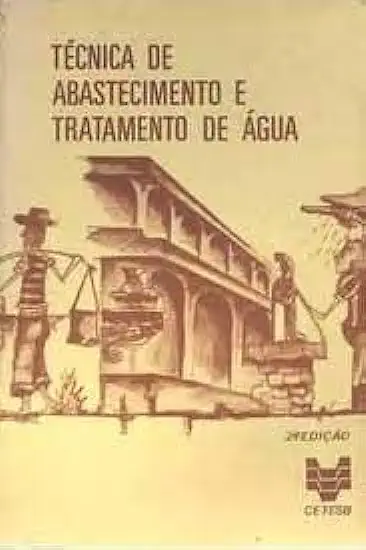
Water Supply and Treatment Techniques - Walter Engrácia de Oliveira and Others
Water Supply and Treatment Techniques: A Comprehensive Guide
Introduction
Water is essential for life, and access to clean, safe water is a fundamental human right. However, water scarcity and contamination are growing problems around the world, making water supply and treatment more important than ever.
Water Supply
The first step in providing clean water is to ensure a reliable water supply. This can be done through a variety of methods, including:
- Surface water sources: Rivers, lakes, and reservoirs are all potential sources of surface water. However, surface water can be contaminated by pollutants such as bacteria, viruses, and chemicals.
- Groundwater sources: Groundwater is water that is stored underground in aquifers. Groundwater is generally cleaner than surface water, but it can still be contaminated by pollutants such as bacteria, viruses, and chemicals.
- Desalination: Desalination is the process of removing salt from seawater. Desalination is a growing source of water in many parts of the world, but it is a relatively expensive process.
Water Treatment
Once a water supply has been secured, it must be treated to remove contaminants and make it safe for drinking. Water treatment can be done through a variety of methods, including:
- Filtration: Filtration is the process of removing particles from water by passing it through a filter. Filters can be made of a variety of materials, including sand, gravel, and activated carbon.
- Disinfection: Disinfection is the process of killing bacteria and other microorganisms in water. Disinfection can be done through a variety of methods, including chlorination, ozonation, and ultraviolet (UV) light.
- Coagulation and flocculation: Coagulation and flocculation are processes that help to remove impurities from water by causing them to clump together. Coagulation is done by adding a chemical to the water that causes the impurities to form small particles. Flocculation is done by adding a second chemical that causes the small particles to clump together into larger particles.
- Sedimentation: Sedimentation is the process of allowing the impurities in water to settle to the bottom of a tank. Sedimentation is done by slowing down the flow of water and allowing the impurities to settle out.
Water Quality Standards
Water quality standards are essential for ensuring that water is safe for drinking. Water quality standards are set by government agencies and specify the maximum levels of contaminants that are allowed in drinking water.
Water Supply and Treatment Challenges
There are a number of challenges associated with water supply and treatment, including:
- Water scarcity: Water scarcity is a growing problem around the world, and it is making it difficult to provide clean water to everyone who needs it.
- Water contamination: Water contamination is another growing problem around the world, and it is making it difficult to ensure that water is safe for drinking.
- Climate change: Climate change is also having an impact on water supply and treatment, as it is causing changes in precipitation patterns and sea levels.
Conclusion
Water supply and treatment are essential for ensuring that people have access to clean, safe water. By understanding the challenges associated with water supply and treatment, we can work together to find solutions that will ensure that everyone has access to this vital resource.
Call to Action
If you are interested in learning more about water supply and treatment, I encourage you to purchase a copy of "Water Supply and Treatment Techniques". This book provides a comprehensive overview of the water supply and treatment process, and it is an essential resource for anyone who is interested in this field.